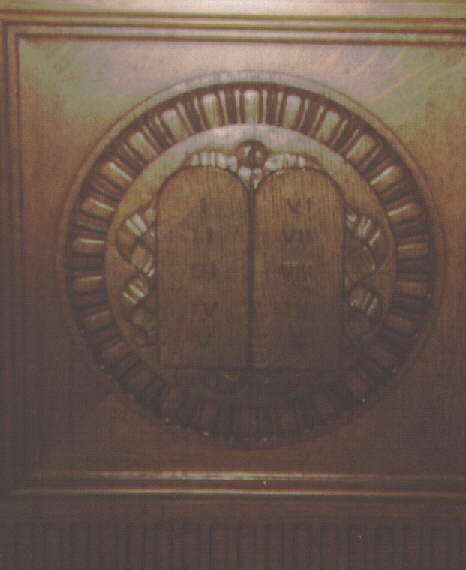
Posted on 04/22/2012 6:14:04 AM PDT by FR_addict
"... Taft decided enough was enough and persuaded Congress to authorize the construction of a permanent home for the Court. Construction on the Supreme Court Building was completed in 1935, and the Court finally had a home to call its own after 146 years of existence.
Sculpture figures prominently in the Corinthian architecture of the Court Building. One chamber features a frieze decorated with a bas-relief sculpture by Adolph A. Weinman of eighteen influential law-givers. The south wall depicts Menes, Hammurabi, Moses, Solomon, Lycurgus, Solon, Draco, Confucius and Octavian, while the north wall depicts Napoleon Bonaparte, John Marshall, William Blackstone, Hugo Grotius, Louis IX, King John, Charlemagne, Justinian and, you guessed it, Mohammad." ...
(Excerpt) Read more at mentalfloss.com ...
As a historical figure, Jesus had more to do with shaping our laws than anyone else.
I accidently had myself aas the author.
The author is Matt Soniak at http://www.mentalfloss.com/blogs/archives/11107
We should add a blow-up head scarf.

Good question.
Mohammad was a prophet, right? Who had the word of Satan....errr...I mean Allah, revealed to him in dreams...right?
So, why wasn't a sculture of Jesus of Nazareth, the one and true Son of God, included in the original design?
Mohammad couldn’t even read or write.
And was quite addled in his thinking too.
Why on earth would you want to put Jesus on the saem level as a mere man?
Funny thing about World Religions, Of all that are worshiped, only one can no longer be found in his tomb.
I thought the moon rock cult forbade making images of the pedophile prophet? How have they let this go so long without declaring a Jihad against the building?
As far as I’m concerned, they could have put Jesus by himself on the Supreme Court building, but if we are going to recognize historical figures, we shouldn’t leave Jesus out, the most important historical figure guiding our lives. He lived the life of a man and shaped our lives for Christians and non-Christians alike.
I was shocked that they had Mohammad up there at all as some sort of precursor to the laws of the US Supreme Court.
"But then, in 1997, the fledgling Council on American-Islamic Relations brought their wrath to the Court, petitioning then-Chief Justice William Rehnquist to remove the sculpture. CAIR outlined their objections as thus:
1. Islam discourages its followers from portraying any prophet in artistic representations, lest the seed of idol worship be planted.
2. Depicting Mohammad carrying a sword “reinforced long-held stereotypes of Muslims as intolerant conquerors.”
3. Building documents and tourist pamphlets referred to Mohammad as “the founder of Islam,” when he is, more accurately, the “last in a line of prophets that includes Abraham, Moses and Jesus.”
Rehnquist dismissed CAIR’s objections, saying that the depiction was “intended only to recognize him [Mohammad] … as an important figure in the history of law; it was not intended as a form of idol worship...”
So Rehnquist thought Mohammad should remain on the building.
Moses can’t be found either!
Moses and Solomon are there according to the article.
It seems to me Aristotle and Plato should have been included over Menes (who seems to be relatively unknown) and some of the others.
Political correctness wouldn't be tolerated with the saracens at the gate!
Oh if only today some people would see the evil of mohammadisn!
Wow. Game, set, match.
Well done.
If Obama had a son, of course.
The "founders" were the radicals of the day. Syncristic beliefs, kind of like Anglicans: Christianity is ok, as long as you don't take it too seriously.
Flame away all you Protenstants!
The "founders" were the radicals of the day. Syncristic beliefs, kind of like Anglicans: Christianity is ok, as long as you don't take it too seriously.
Flame away all you Protenstants!
Disclaimer: Opinions posted on Free Republic are those of the individual posters and do not necessarily represent the opinion of Free Republic or its management. All materials posted herein are protected by copyright law and the exemption for fair use of copyrighted works.